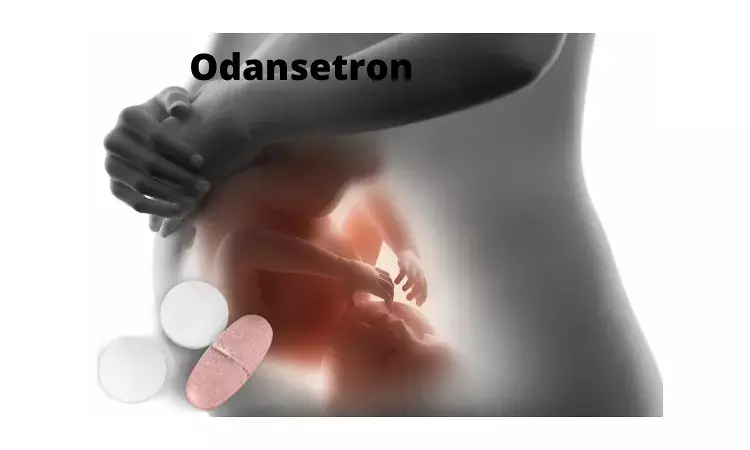- Home
- Medical news & Guidelines
- Anesthesiology
- Cardiology and CTVS
- Critical Care
- Dentistry
- Dermatology
- Diabetes and Endocrinology
- ENT
- Gastroenterology
- Medicine
- Nephrology
- Neurology
- Obstretics-Gynaecology
- Oncology
- Ophthalmology
- Orthopaedics
- Pediatrics-Neonatology
- Psychiatry
- Pulmonology
- Radiology
- Surgery
- Urology
- Laboratory Medicine
- Diet
- Nursing
- Paramedical
- Physiotherapy
- Health news
- Fact Check
- Bone Health Fact Check
- Brain Health Fact Check
- Cancer Related Fact Check
- Child Care Fact Check
- Dental and oral health fact check
- Diabetes and metabolic health fact check
- Diet and Nutrition Fact Check
- Eye and ENT Care Fact Check
- Fitness fact check
- Gut health fact check
- Heart health fact check
- Kidney health fact check
- Medical education fact check
- Men's health fact check
- Respiratory fact check
- Skin and hair care fact check
- Vaccine and Immunization fact check
- Women's health fact check
- AYUSH
- State News
- Andaman and Nicobar Islands
- Andhra Pradesh
- Arunachal Pradesh
- Assam
- Bihar
- Chandigarh
- Chattisgarh
- Dadra and Nagar Haveli
- Daman and Diu
- Delhi
- Goa
- Gujarat
- Haryana
- Himachal Pradesh
- Jammu & Kashmir
- Jharkhand
- Karnataka
- Kerala
- Ladakh
- Lakshadweep
- Madhya Pradesh
- Maharashtra
- Manipur
- Meghalaya
- Mizoram
- Nagaland
- Odisha
- Puducherry
- Punjab
- Rajasthan
- Sikkim
- Tamil Nadu
- Telangana
- Tripura
- Uttar Pradesh
- Uttrakhand
- West Bengal
- Medical Education
- Industry
Ondansetron expsoure during pregnancy not associated with adverse fetal outcomes: JAMA

Canada: Ondansetron is popularly used to treat Nausea and Vomiting during pregnancy (NVP). Approximately 20% to 25% of pregnant women use the 5-HT3 receptor antagonist ondansetron off-label to treat NVP. A new study by Colin R. Dormuth, ScD reported that Ondasetron had no significant effects on fetal mortality, stillbirth, spontaneous abortion, and other congenital malformations compared to the use of other antiemetics. The study is published in JAMA Network Open.
The objective of the study was to determine the association between ondansetron exposure during pregnancy and the risks of spontaneous abortion, stillbirth, and major congenital malformations.
The study was designed as a cohort study conducted in 3 countries, with a meta-analysis. Participants included women and girls aged 12 to 55 years who experienced spontaneous abortion, induced abortion, stillbirth, or live birth between April 2002 and March 2016, as per recorded data in administrative data from 5 Canadian provinces (British Columbia, Alberta, Saskatchewan, Manitoba, and Ontario), the US IBM MarketScan Research Databases, and the UK Clinical Practice Research Datalink. The statistical analysis was completed in October 2020.
The primary outcome was fetal death, which included spontaneous abortion or stillbirth. Secondary outcomes were the two main components of the primary outcome and major congenital malformations identified during the year after a live birth.
The results of the study were found to be:
• A total of 4,56,963 pregnancies were included in the study of fetal death (249 787 [54.7%] in Canada, 197 913 [43.3%] in the US, and 9263 [2.0%] in the UK; maternal age, ≤24 years, 93 201 patients [20.4%]; 25-29 years, 149 117 patients [32.6%]; 30-34 years, 142 442 patients [31.2%]; and ≥35 years, 72 203 patients [15.8%]).
• Fetal death was found in 12,907 (7.9%) of 1,63,810 pregnancies exposed to ondansetron, and 17,476 (5.7%) of 3,06,766 pregnancies exposed to other antiemetics.
• The adjusted hazard ratios were found to be 0.91 for fetal death with time-dependent ondansetron exposure during pregnancy, 0.82 (95% CI, 0.64-1.04) for spontaneous abortion, and 0.97 for stillbirth.
• For major congenital malformations, the estimated odds ratio was 1.06. Results of sensitivity analyses were generally consistent with those of the primary analyses.
Dr Dormuth, and the team concluded that "In this large, multicenter cohort study, there was no association between ondansetron exposure during pregnancy and increased risk of fetal death, spontaneous abortion, stillbirth, or major congenital malformations compared with exposure to other antiemetic drugs."
Reference:
Dormuth CR, Winquist B, Fisher A, et al. Comparison of Pregnancy Outcomes of Patients Treated With Ondansetron vs Alternative Antiemetic Medications in a Multinational, Population-Based Cohort. JAMA Netw Open. 2021;4(4):e215329. doi:10.1001/jamanetworkopen.2021.5329
Medical Dialogues consists of a team of passionate medical/scientific writers, led by doctors and healthcare researchers. Our team efforts to bring you updated and timely news about the important happenings of the medical and healthcare sector. Our editorial team can be reached at editorial@medicaldialogues.in.
Dr Kamal Kant Kohli-MBBS, DTCD- a chest specialist with more than 30 years of practice and a flair for writing clinical articles, Dr Kamal Kant Kohli joined Medical Dialogues as a Chief Editor of Medical News. Besides writing articles, as an editor, he proofreads and verifies all the medical content published on Medical Dialogues including those coming from journals, studies,medical conferences,guidelines etc. Email: drkohli@medicaldialogues.in. Contact no. 011-43720751


